Which Payment Type is Best if You are Trying to Stick to a Budget?
Inside: This guide will help you decide among the different types of payments on the market. This is especially helpful when you want to stick to a budget but struggle with all of the options available.
When you are trying to tighten down the hatches on your spending, you are doing everything possible to stick to your budget.
You are determined to stick to your budget this time around. But, you always hear that budgeting can be hard.
Well, here are some quick budgeting tips that will make sure to stick to your budget.
As most new budgeters learn, they struggle to stick to a budget for their monthly expenses. It is a natural process everyone goes through.
Budget, if you are looking for an easy button, then learn which payment type is best if you are trying to stick to a budget.
Especially if you spend a lot of time on social media, studies have shown you are more likely to overspend. So, you must learn which payment type will have you stick to a budget.
Then, you may be wondering and wanting help deciding which payment type is best for you.

What Are The Different Types Of Payments?
1. Cash
2. Credit Cards
3. Debit Cards
4. Checks
5. Apple Pay
6. Mobile Wallet – like Venmo or Zelle
7. Prepaid Cards or Gift Cards
8. Paypal
9. Cryptocurrency
This post may contain affiliate links, which helps us to continue providing relevant content and we receive a small commission at no cost to you. As an Amazon Associate, I earn from qualifying purchases. Please read the full disclosure here.
The Optimal Solution Payment Type Solution
The most efficient payment type is something that is instantaneous and there are no fees associated with the transaction.
- Cash is the most efficient payment type: Cash payments are usually the most efficient and convenient way to pay for goods or services.
- Credit cards can be a less favorable option: Credit cards tend to have high-interest rates and can lead to financial disaster if used irresponsibly.
- Debit cards are a great way to keep your spending within your budget: Debit cards should be considered a top priority for budgeting because they keep you within your spending limits.
- Developing a budget will help you avoid financial disaster: A budget helps you stay organized and make informed decisions about which payment method works best for you.
Today, there are so many options on which payment type to use in today’s online world.
1. Cash

Cash is a payment type that can be used to reduce debt spending. It is versatile and can be used for a variety of expenses, such as groceries, medical bills, and gym memberships.
Cash is an excellent choice for people just starting to budget and save.
It is more restrained than credit or debit cards. The envelope method of cash budgeting can be used to train your brain to reduce spending. Cash is the most traditional payment method and has the fewest drawbacks. However, you need a safe place to store your cash, and some stores may not accept it.
Benefits of Cash:
- Cash is an excellent payment type when your financial goals are to reduce debt spending.
- Cash is a finite payment method that prevents you from overspending.
- You have a set amount of money to spend each month, so there’s no chance of overspending.
- Easy to track with the envelope method: Utilizing the envelope method ensures that you are tracking your spending (i.e groceries, gas, medical bills) and making sure that you aren’t overspending.
- Cash is a quick and easy way to pay for goods and services.
- No Fees. No maintenance fees or interest rates as credit cards. Cash is just plain cash – printed paper of currency.
- You can avoid high fees associated with card transactions: There are no associated fees when paying with cash, making it the cheapest option overall.
- Cash discounts may be available. Since you are paying with cash many small businesses offer a cash discount of 2-5%.
- You can use cash at any store: No need to carry around extra cards or checks.
- It’s easy to get cash: You can easily get cash and make extra cash.
- There’s no need for bank account details: No need for bank account details means you’re free from identity theft risks and other inconveniences that come with having a bank account.
- Cash allows you to skirt some financial regulations: Because cash payments don’t fall under the purview of many financial regulations, businesses can take advantage of loopholes in the law that allow them to charge higher interest rates on loans or engage in shady business practices. (highly recommended to stay above book)
Cons of Cash:
- Possibility of losing or stolen cash: Keep your cash in a safe place!
- You need a safe place to store your money: Another disadvantage of using cash is that you may need a safe place in which to keep it – some stores don’t accept it as a payment method.
Why Choose Cash?
- Total control over your money, so there’s little chance of unexpectedly running out of funds.
- Cash is a great way to stay on budget, as you can easily track your spending and see where you need to cut back.
- Unpleasant to spend money with cash, which can help train your brain to reduce spending.
- Cash is a quick and easy way to pay: Using cash eliminates the need for banks, credit cards, or other forms of payment.
Verdict: Paying with cash is the best method for budgeting and saving.
Overall, cash is a great payment type when it comes to budgeting. You can immediately see how much money you’ve spent and what needs to be cut back.
You can’t make impulsive buying decisions with debit cards or credit cards.
With a finite amount you can spend, cash is an excellent choice to prevent overspending. According to research, paying with cash can feel unpleasant, which can train your brain to reduce spending as much as possible.
2. Credit cards
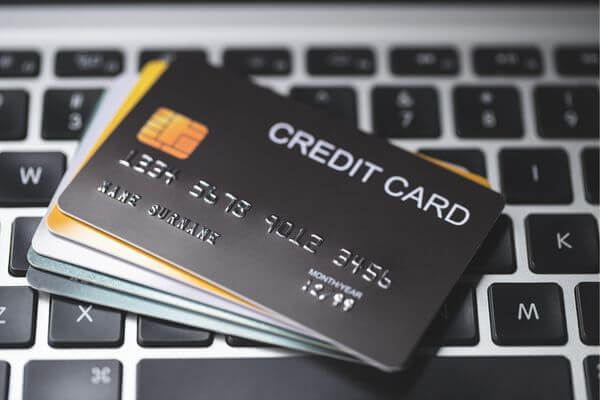
Credit cards offer a number of benefits, including convenience, cash back, and the ability to make large purchases or pay bills in case of emergency. However, credit cards also come with credit card debt and can lead to overspending and financial problems if not used carefully.
For many, credit cards are the easiest way to blow your budget because you don’t have control over how much money you spend.
It is possible to overspend with credit cards if you are not mindful of what you charge.
On the flip side, this is a preferred method as many credit cards also offer rewards programs that give you cash back or points for purchases. If you make the conscious decision to use credit cards, you must make payments on time to avoid penalties.
Benefits of Credit Cards
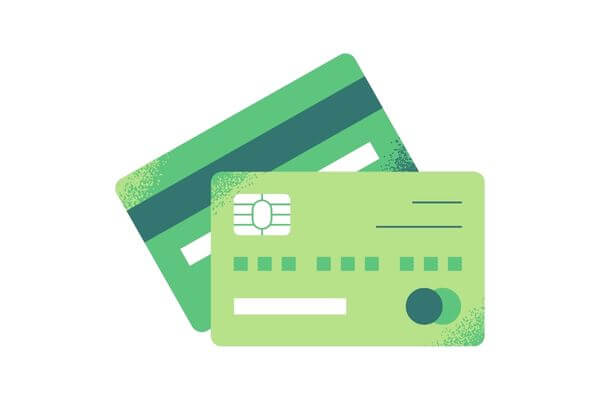
- Credit cards are convenient: Convenient to use and don’t have to worry about losing cash.
- Use a credit card if you are disciplined and have strict spending habits: If you are disciplined and have strict spending habits, then using a credit card can work well for budgeting purposes.
- Flexibility on larger purchases: Some benefits that come with having a credit card include more cash flow as well as being able to make larger purchases.
- Credit cards provide support in times of crisis: Many credit cards offer extended services that can help like 24-hour fraud protection, lost wallet services, traveler’s insurance, and many other benefits – check each issuer for details.
- $0 Liability on Unauthorized charges: Your credit card company will not be held responsible for any charges that were not authorized by you. This means that if you did not authorize a charge in person, online, or otherwise, you will not be responsible for it.
- Fraud protection: Check your credit card issuer, but many offer fraud protection.
- New card introductory APR is helpful to pay down debt: The introductory APR for the new card may not last long.
- Payments on balance transfer should be manageable: Make sure that the payments on your balance transfer are manageable.
- Points: You can accrue points along with your spending which can be a great perk.
- Credit card interest rates are significantly lower than payday loans: Interest rates on credit cards are usually much lower than payday loans.
- Due Date is After your statement closes. Since your bill cycle is at least another 21 days between the closing date for your statement and the due date, it gives you flexibility. Personally, I still account for the credit card bill in the same month that it was accrued.
Cons of Credit Cards
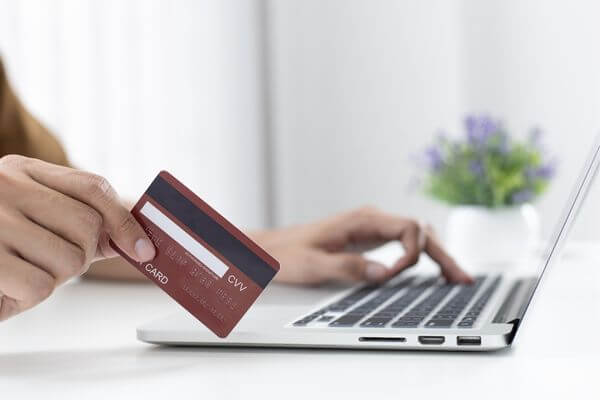
- Potential for credit card debt: When using a credit card, be aware of your credit limit and the interest rate that you will have to pay on your debt. Also one of the categories of debt.
- Credit limit often leads people to spend money: The credit limit often leads people to spend money by giving them a false sense of security, when they should stick to a budget and pay attention to their credit card statement and the billing cycle.
- Credit card overspending can lead to debt: Consider the purchase if it is essential or delay it if possible.
- Ability to easily purchase something you cannot afford. Buying something that you don’t have the money saved up for will cost you interest fees associated and maybe even with a credit card balance transfer.
- There are a number of fees associated with a balance transfer: Transfer fee, interest on new purchases charged to the card.
- Your introductory APR may not be valid if you make too many payments late: If you fall more than 60 days behind on payments your introductory APR might be canceled and you may face higher interest rates.
- Credit score can suffer from debt: When you carry a credit card balance or don’t pay your monthly bills on time, you will lower your credit score.
- Avoid carrying a balance: Pay your statement in full each month to avoid paying interest and maximize your grace period.
Key Takeaways on Credit Cards
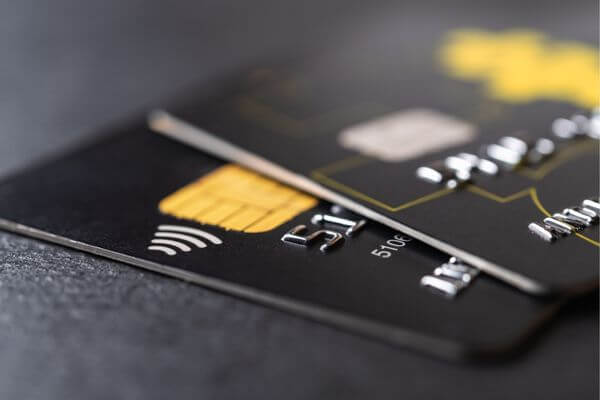
- Make sure to pay attention to the dates: Don’t spend more than you can afford, and make sure you’re making your minimum monthly payments on time so that your debt doesn’t increase over time.
- A credit card can be used for budgeting only if you’re very disciplined: If you know that overspending is NOT an issue and you pay the credit card’s monthly balance in full, then using a credit card is fine.
- Credit card transactions usually take several days to register in the feedback system: Something to look out for!
- You can step back into debit cards or cash if needed: If credit cards are not for you, there are other options available such as debit cards or cash
3. Debit cards
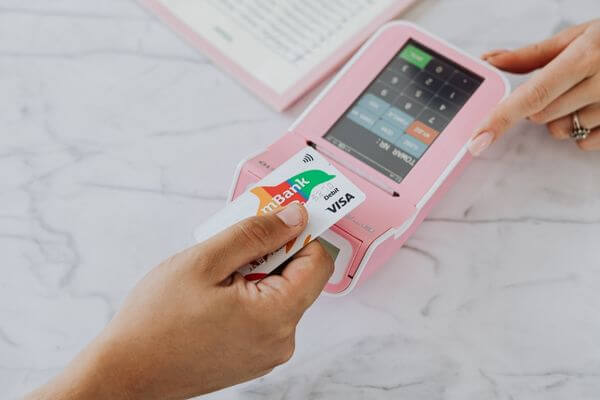
Debit cards are a good option if you want to stick to a budget because the predetermined amount of funds can help you stay within your means. Additionally, debit cards are more convenient than cash and just as accepted as credit cards in most places.
A debit card works more similarly to cash than to credit cards.
They provide an easier way to track your spending and avoid having to carry a lot of cash.
Pros of Debit Cards:
- No Need to Carry Cash: A debit card is better than cash because you don’t have to carry a lot of paper money and change around, and they’re also safer.
- Debit cards are faster and easier to use: Debit cards work just like credit cards – withdrawing cash, making purchases, and paying bills – but they are linked directly to your bank account, so there is no need to carry around a separate cash envelope wallet or purse for them.
- A debit card is a good option if you want to stick to a budget: Debit cards come with a predetermined amount of funds that you can spend from your bank account just like cash.
- Tracking payments is easy with debit cards: Your debit payments will appear on your issuer’s dashboard, which you can monitor anytime from any location.
- Convenience: Debit cards are more convenient to use and faster than needing to write a check or carry around cash. Plus they don’t add to your debt.
- Shopping online is easy. You can use your debit card to make online purchases with your bank account, and digital banking tools make tracking your spending easy.
- Points: Some debit cardholders can earn points for spending on their cards, which can be redeemable for rewards such as cash back or gift cards. This is new to compete with credit cards.
- Fraud protection is typically offered for free with most debit cards—meaning if your card is stolen or used without your permission, you can get your money back.
- No impact on your credit report. When you use a debit card, the funds are actually withdrawn from checking or savings accounts so there is no credit reporting occurring.
Cons of Debit Cards:
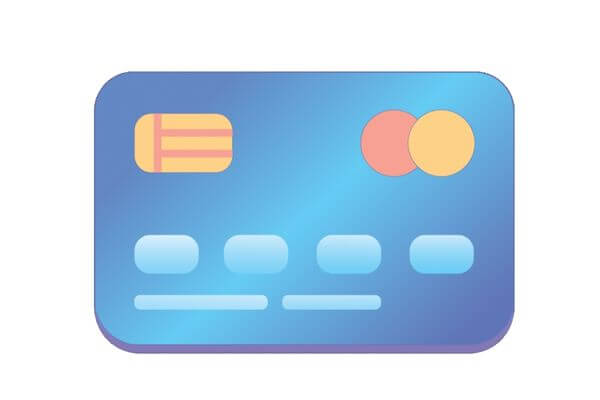
- An overdraft on a debit card can happen when a purchase exceeds the amount of money in the checking account, leading to overdraft fees.
- Funds on hold with fraudulent charges. If your account gets hacked, your losses will be limited since most banks protect their users against fraudulent charges and online purchases with their accounts. However, those funds will be held while they investigate and you may be liable for $50.
- No chance to improve your credit score. Since you are not borrowing money, you are unable to improve your credit score.
Debit cards are a great way to keep your spending within your budget and avoid overspending which can lead to many detrimental issues.
Regardless of the overdraft fee, debit cards are still better than cash because they’re safer and easier to carry around.
4. Checks

Checks… do people still write checks? Why yes they do!
Checks offer a few benefits as a payment method, even though they are slowly being replaced by more modern options.
This can help you keep track of your spending and make sure you do not overspend. Additionally, if you ever need to dispute a charge, having a check can be helpful in proving what you paid for.
What is a check?
A check is a written, dated, and signed instrument that directs a bank to pay a specific sum of money to the bearer from the check writer’s account. The date is usually written in month/day/year format. The signature of the check writer is usually on the line below “Pay to the order of.”
There are three main types of checks:
- A cashier’s check is a check guaranteed by a bank, drawn on the bank’s own funds, and signed by a cashier.
- A certified check is a personal check for which the bank has verified that there are sufficient funds to cover the payment.
- A personal check is one that you write yourself and that is not guaranteed by the bank.
Pros of Checks

- Checks are still a payment option: Checks are one of the traditional payment methods, but it is slowly dying out because of modernization.
- Physical written record. It can be helpful to have physical copies of checks in addition to digital records through the bank.
- You need to make both digital and physical copies of the check: Save check stubs but also transfer the information to a budgeting system.
Cons of Checks
- Saving check stubs is helpful, but you still need to transfer the information to a budgeting system: Useful for tracking spending, but you’ll likely want more detailed records than just check stubs.
- Not as convenient as credit or debit cards.
5. Apple Pay or Apple Cash

Apple Pay is easy to use and convenient since you only need to connect your smartphone to your cards and bank accounts via the app.
It is easy to use since you just hold your phone up to the reader and wait for the payment screen to appear.
You can even get cash back with apple pay.
Pros of Apple Pay:
- Apple Pay is easy to use and convenient: You only need to connect your iPhone to your cards and bank accounts via the app.
- You don’t need to carry any extra cards or cash: No need for additional cards or cash when you’re out and about
- You can use Apple Pay on different devices: You can use Apple Pay on your iPhone, iPad, and Mac.
- Transactions are secure: Your transactions are secured with Touch ID or a passcode.
- Set up Spending Limits for each user. This way you can make sure you (or others with authorized access) are not spending more than you intended. Learn how.
- Protection of Data during transactions. Your actual credit card number is changed to a different digital number, which allows limits your card number’s exposure.
Cons of Apple Pay:
- Not widely accepted (yet). This method of payment is 100 percent guaranteed. While many stores offer apple pay, not all do quite yet.
- The same rules apply if you load apple pay with a debit or credit card drawbacks include late fees, interest rates, and overspending: Keep that in mind when choosing Apple Pay as your payment method.
6. Mobile wallets like Google Pay, Samsung Pay, Venmo, or Zelle

Mobile wallets are digital payment systems that allow you to pay for items with your smartphone. Many people find mobile wallets are very convenient and becoming a traditional method of payment (such as credit cards).
With mobile wallets, you are making digital payments without having to carry around cash or cards using just your smartphone.
Mobile wallets are easy to use and provide instant payment convenience, making them perfect for shopping online.
Pros of Mobile Wallets:
- Mobile wallets use credit cards and debit cards: Connect your smartphone to your bank accounts and use it for digital payments.
- Mobile wallets are easy to use and convenient: Instant payment convenience makes them perfect for shopping online as well.
- No need for cash or cards: No need for cash or cards.
- Strong secuirity features provide privacy and security features that ensure your personal information is safe from data breaches and unwanted charges.
- You can make purchases without having to show your identification: You can make purchases without having to show your identification.
- Additional Layer of Security. Additionally, mobile wallet data is protected with verification, such as fingerprints.
Cons of Mobile Wallets:
- With Zelle and Venmo, it is easy to send money to the wrong person or add an extra zero and send more money from planned. More often than not, it is difficult to recover your money.
- You need to be disciplined when using a mobile wallet: Pay attention to late fees and interest rates, as well as the amount you spend in a month.
Learn where can I load my Cash App card.
7. Prepaid Cards or Gift Cards
A prepaid card or a gift card could be right for you. The advantage of these is the mere fact that you reached the limit is enough to deter overspending.
It can make you think twice about whether you need to purchase an item or not.
Pros of Prepaid Cards and Gift Cards
- Easy to use: Prepaid and gift cards are easy to use and manage your finances with.
- The mere fact that you reached the limit is enough to deter overspending: It can make you think twice about whether you need to purchase an item or not.
- No strings attached: No need to worry about any fees associated with the prepaid card once activated.
- Privacy: The prepaid card does not track your spending or use any personally identifiable information.
- Credit Score Doesn’t Matter: Your credit score does not matter when obtaining a prepaid card.
Cons of Prepaid Cards or Gift Cards
- Losing a prepaid card is not a fun experience. Contact the prepaid card issuer right away to protect the funds on the prepaid card.
- Fraud protection: Consider whether your prepaid card issuer offers any theft or fraud protection, as not all providers offer this feature.
- Prepaid cards have limits on how much money you can load onto them, which can be frustrating if you need to make a large purchase.
8. PayPal

PayPal is a very convenient way to pay for items online or in person. It is widely accepted and used by many people.
PayPal is a digital payment service that offers convenience and ease of use. You can use them to send money to people or pay for online purchases.
However, because these services can only be used online, they should not be relied on as your sole method of budgeting and tracking expenses. Instead, consider Paypal in combination with another budgeting tool, like a spreadsheet or app, to get a fuller picture of your spending.
Pros of PayPal:
- PayPal is one of the most popular online payment methods: Widely accepted and used by many people.
- You can use them to send money to people or pay for online purchases: Help you review your spending prior to purchase.
Cons of Paypal:
- Easy Target for phishing scams. A phishing scam is when someone tries to trick you into giving them your personal information, like your password or credit card number. They might do this by sending you an email that looks like it’s from PayPal, but it’s not. Or they might create a fake website that looks like PayPal. If you enter your information on these sites, the scammers can then use your account to make purchases or send money to themselves.
- Reputation for poor customer service. This is evident in their customer service ratings, which are some of the lowest in the industry. The majority of complaints against PayPal revolve around poor service received when asking for assistance with fund freezes and account holds.
9. Cryptocurrency (ie: Bitcoin)

Cryptocurrencies offer a new and innovative way of handling payments. They’re not yet widely accepted, so there’s potential for businesses to get in on the ground floor with this new technology.
However, because cryptocurrencies are so new, it’s uncertain if they will be regulated or not. This could pose a challenge for businesses down the road.
Pros of Crypto
- Not subject to the same regulations as traditional currency, which makes them appealing to those who want to avoid government intervention.
- The valuation of Crypto changes rapidly. If you are smart with crtyple this is a great way to spend your crypto coins.
Cons of Crypto
- Cryptocurrencies are not accepted everywhere: Cryptocurrencies are not accepted by most organizations yet, which it makes it difficult to use them in day-to-day life.
- It’s unclear if cryptocurrencies will be regulated: It’s uncertain if cryptocurrencies will be strictly regulated or not. This poses a challenge for those who want to use them as a payment method.
- Bitcoin and other cryptocurrencies are still in their infancy: Bitcoin and other cryptocurrencies have only been around for a few years, so they may still face challenges in the future.
Here are the most popular budget apps today.
Other Payment Methods:
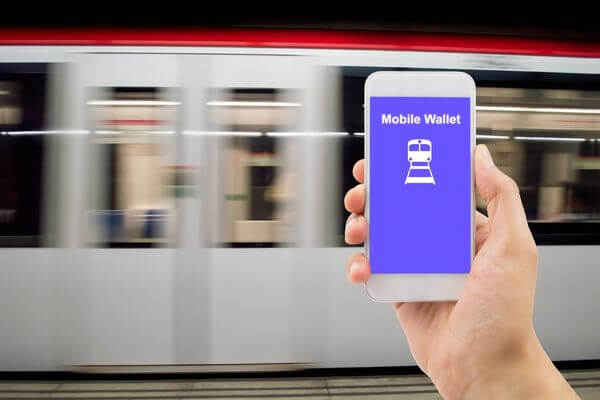
ACH payments
ACH Payments is an excellent way to pay bills and other financial obligations: You can easily set up a billing cycle for recurring payments, making it safe and convenient.
Fewer people are aware of your transactions when using ACH payments, reducing the chances of fraud or theft.
Key Facts:
- Fewer people know about your transactions when using ACH payments, reducing the chances of fraud or theft.
- Your checking account information is not shared or accessed by the system in any way.
- You can quickly pay bills and other expenses with ACH payment: Financial institutions offer this as part of their deals.
- When setting up recurring bills with ACH payment, you are aying your bills on time is important for maintaining a good credit score.
- Pay attention to your check account balances: Make sure you have enough funds in your check account to avoid paying overdraft fees.
Money orders
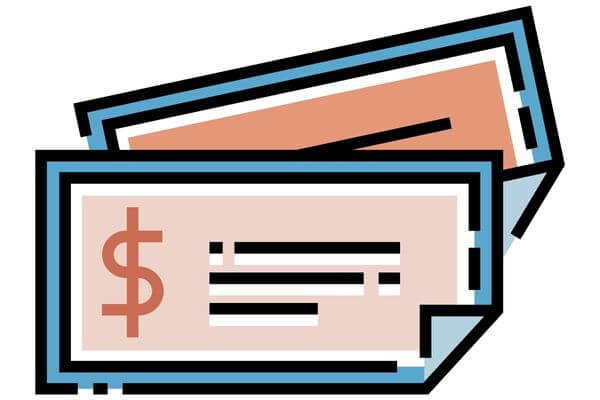
A money order is a document that orders the payment of a specified amount of money. Money orders are convenient because they can be bought at many locations, including post offices, banks, and convenience stores.
To get a money order, you will need to fill out a form with the payee’s name, the amount of the payment, and your contact information. You will then need to purchase the money order with cash or a debit card.
To cash a money order, you will need to take it to a bank or post office. You will need to show identification and sign the back of the money order. The teller will then give you the cash for the payment.
- More secure than cash: Money orders are more secure than cash because they don’t require a bank to make the transaction.
- Less convenient: money orders are less convenient because you must purchase them in person.
- Able to trace. They are also more secure than cash because they can be traced if lost or stolen.
Wire Transfers

Wire transfers are a more secure way to transfer money than traditional methods like checks and cash. These are sent through the banking system and are usually processed within two business days.
Typically, wire transfers are used when sending and receiving large sums of money (over $10000).
- More secure than cash: Wire transfers are more secure than cash as the bank verifies there is enough money to make the wire transfer.
- Fees involved with using a wire transfer. Most institutions charge for handling a wire transfer.
What method of payment is best?
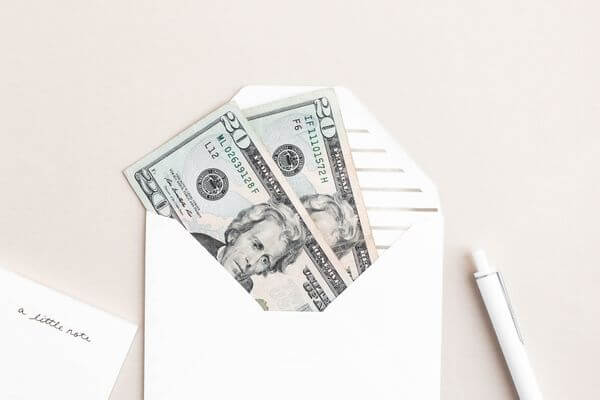
Cash is the most widely accepted form of payment, but debit and credit cards are very popular.
The payment method that is best for you depends on which one helps you to stick to your budget and spend less money. The goal is to be financially stable.
What method is best for sticking to a budget?

There are several different types of budgeting methods that people use in order to manage their finances. Many people focus on using the 50/30/20 method, in which each percent corresponds to a different category of expenses.
There are plenty of budgeting tools available today to make sure you stick to your budget.
You need to find what works best for you. At the end of the month, you want to spend less than you make. That is the winning combo!
1. Budgeting App
There are many budgeting tools available online, which can be helpful as it can be easier to track your progress and budget over time.
You can use various popular budgeting apps like Quicken, Qube Money, or Simplifi.
These apps can help you track your spending, set goals, and stay on track with your budget.
2. Paper and Pen or Simple Spreadsheet
Some people find that they prefer using a simple spreadsheet or paper budget. This may be due to personal preference or because they find it easier to understand and use.
Additionally, using a paper budget may help you stay more organized as you can physically see where your money is going.
Options to get you started include our own budgeting spreadsheets or using an automated system like Tiller.
3. Envelope budgeting method
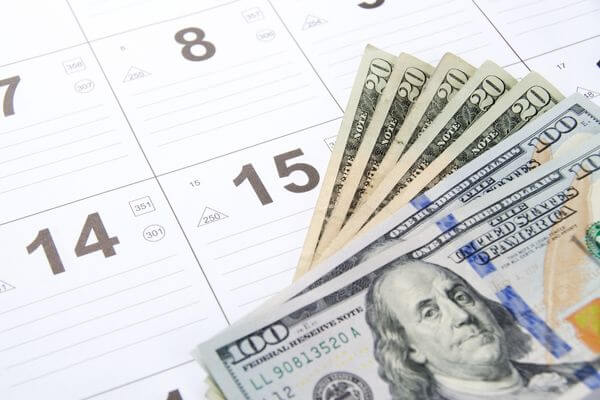
The cash envelope system is a good way to stick to a budget because it is rigid and based on envelopes and cash. You can’t get more money until your cash payday. So, this system helps you track your spending and budget better.
However, using only cash can have drawbacks as having large amounts of cash on hand can be risky.
The envelope method gives you a sense of control over your spending and makes it more tedious to write down your transactions. If you find writing down your transactions tedious, the envelope method may be too much for you.
4. Know Your Budget Categories and Track expenses
Tracking expenses is essential to move ahead financially: Knowing what you have spent in each category will help you make better financial decisions.
Be specific with your budgeting categories. Don’t make it too complicated. Always remember to include household items, clothing, and groceries when tracking expenses.
5. Prioritize your Budget Plan

A budget can provide a realistic picture of your finances, help reduce stress related to money matters, and guide you toward achieving your goals.
Creating a budget can help ensure that you are able to meet your financial obligations and still have money left over for savings and other goals. A budget can also help you track your spending so that you can make adjustments if necessary.
- Make a budget plan: This will help you stay on track and make sure that you are spending your money wisely.
- You decide where to spend money: A budget helps you set future goals and achieve your financial goals.
- Creating a budget can help reduce stress: If you tend to get stressed about money matters, creating a budget can give you peace of mind.
- A budget has other benefits beyond financial ones: If you want to achieve something in life, creating a budget can help guide you in the right direction.
- See where to cut back spending. You can also look at your past spending habits to see where you can cut back. Sometimes it may be necessary to save more in order to achieve long-term goals, like buying a house or having a wedding. Always be mindful of your budget when making payments and spending money.
- It’s a three-step process that involves basic math: Making a budget is simple and requires only basic math skills.
- Stay on track: Making a budget plan will help you stay organized and keep track of your expenses.
A budget plan will help you stay on track and make sure that you are using the best payment type for your budget.
Making a budget is an easy way to save money. By following a few simple steps, you can keep track of your expenses and make sure that you are spending your money wisely.
Which type of payment is best for sticking to a budget?
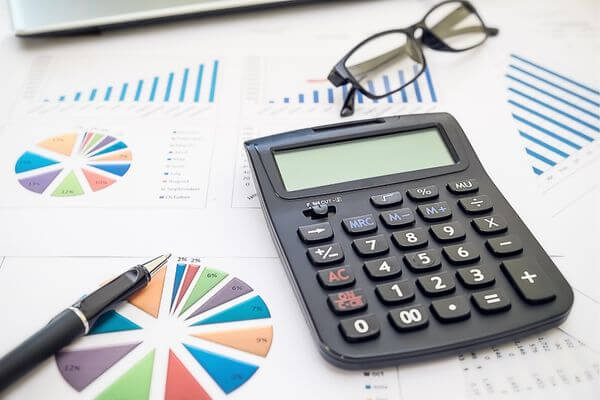
One of the main pros of using cash as a method of payment is that it is the most efficient way to keep track of your finances. This is because it is very easy to budget when you are only dealing with cash.
However, many people prefer debit or credit cards are the best type of payment. They are more convenient than cash and can help you keep track of your spending. However, if you have a bad credit history or a low credit score, credit cards may not be the best option for you.
- Cash payments are the most efficient: Most convenient and easiest to keep track with cash envelopes.
- Credit cards allow you to accrue points along with your spending: These are a great benefit and one that can be a perk if handled well as part of your budgeting process. As long as pay them off in full each month to avoid credit card debt, high-interest rates, and other negative consequences.
- Debit cards are also a good option for sticking to a budget. They can be used like credit cards but with less risk of debt.
- Cash-based payments are a newer option and are more reliable: May not have as many negative consequences as other payment methods such as credit cards or loans.
What Not to Use when you are Trying to Stick to a Budget

You need to steer clear of these types of payments if you want to be financially stable person.
Personal loans
Personal loans are a risky way to budget. However, if you need the money for an emergency or unexpected expense, a personal loan can be a lifesaver.
There are many risks to consider and other ways to lower your spending before resorting to a personal loan.
- Loans can cause budgeting problems: Loans can mess up your budget and make it difficult to stick to spending plans.
- Taking out a personal loan just for the sake of having money can disrupt your budgeting: Consumers often borrow money in order to pretend they’re doing better financially than they really are.
- Borrowing money is usually not a good idea: When you borrow money, you may find that you cannot handle seeing low checking account balance, which can lead to deeper debt problems.
Payday Loans
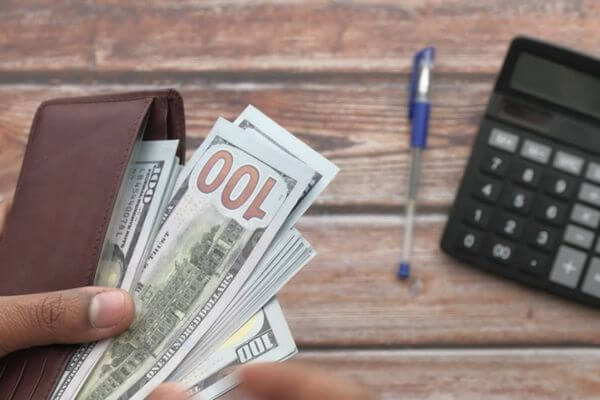
Payday loans are a bad option for someone looking for a long-term solution. They are expensive, and there is a high chance that the person will not be able to pay back the loan.
The interest that is charged is also high, and it can add up quickly.
Write bullet points about what happens with a payday loan
- Payday loans can trap people in a cycle of debt, as they are often unable to pay back the loan in full on the due date.
- When someone takes out a payday loan, they are borrowing money from a lender in a short amount of time, usually two or three days.
- Payday loans are often expensive, with interest rates that can be above 300%.
Debt Consolidation Loans

Debt consolidation can be a good way to manage your debt because it can result in a lower monthly payment and extended payments may impact your financial plan. You can use a debt consolidation calculator to estimate how much debt you can afford before taking out a consolidation loan.
Debt consolidation loans also provide convenience because they have lower interest rates than payday loans. However, be careful when consolidating your debt because it is possible to overspend and lose your introductory APR.
- You may be able to pay off your debt with one monthly payment: A consolidation loan often results in a much lower monthly payment than all of your previous monthly payments combined.
- Extended payments may impact your financial plan: Take a look at how these extended payments will impact your financial planning.
- You can estimate how much debt you can comfortably afford: use this tool – Tally .
- It is possible to overspend with debt consolidation: If you spend more money than you planned on your day-to-day expenses, this could increase your debt. Consider if the purchase is necessary or if it can be delayed.
- You may lose your introductory APR: If you fall more than 60 days behind on payments, you will likely lose your introductory APR and may even trigger a penalty interest rate.
- You need to be careful when transferring a balance: Transferring a balance can also forfeit your grace period and you’ll need to pay interest on new purchases charged to the new card.
What type of payment method is best for sticking to a budget?
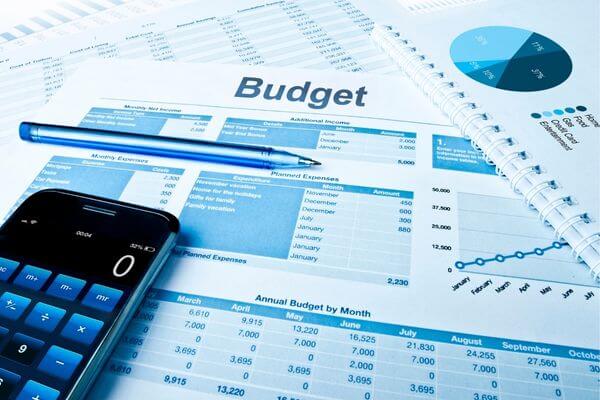
There are a variety of payment methods available, and each has its own benefits and drawbacks. It’s important to choose the payment method that’s best suited for your business and budget.
A payment method that allows you to stick to a budget is the best option.
FAQs

Which payment type can help you stick to a budget?
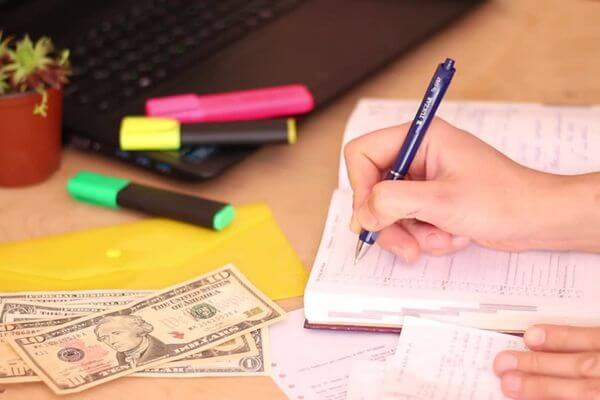
When it comes to choosing a payment type that will help you stick to a budget, there is no one-size-fits-all solution.
The best payment method for you will depend on your specific needs and preferences.
When you are creating a budget, it is important to consider which payment type will help you stay on budget. Different payment types work better for different people, so it is important to experiment and find the one that works best for you.
As I stated for me, I have learned how to use credit cards to maximize cash back. But, I learned how to budget with cash when first starting.
Please pay attention to your budget and how it changes over time, as different payment types may work better at different stages of your life.
Consequently, I hope that this guide has given you a better understanding of the different payment types available and helped you narrow down your options. There are a variety of payment types that can help you stick to a budget, so it’s important to research each one carefully.
I highly recommend using an app to track your expenses and know where you spend your money. By developing a budget and choosing the right payment type, you can stick to your financial goals.
Did the post resonate with you?
More importantly, did I answer the questions you have about this topic? Let me know in the comments if I can help in some other way!
Your comments are not just welcomed; they’re an integral part of our community. Let’s continue the conversation and explore how these ideas align with your journey towards Money Bliss.


